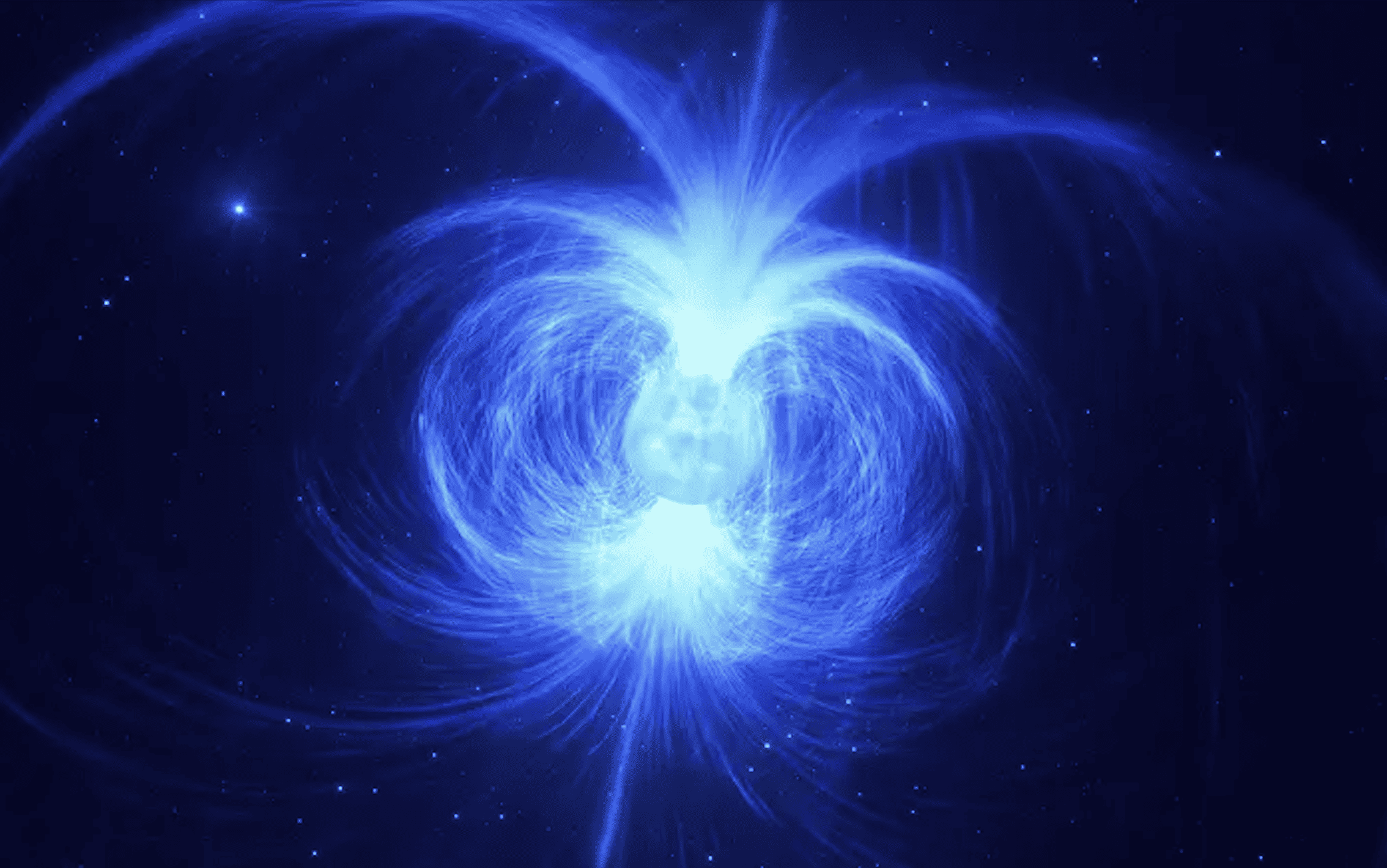
An international team of astronomers led by Tomer Shenar (University of Amsterdam) has discovered a heavy helium star with a strong magnetic field. The researchers suspect it is a long-sought precursor to a magnetar, a magnetic neutron star. They published their findings in the journal Science. The University of Amsterdam announced this in a press release.
Magnetars are the strongest magnets in the universe. These super-compact extinct stars with ultra-strong magnetic fields can be found all over our Galaxy, but astronomers don’t know exactly how they form. Now, researchers, using several telescopes scattered around the globe, have discovered a living star that is likely to become a magnetar. The discovery of this new star type – a heavy magnetic helium star – sheds light on the origin of so-called magnetars.
Although the star has been observed for more than a hundred years, the enigmatic nature of HD 45166 did not allow itself to be easily explained by conventional models, and little more was known about it than that it is part of a binary star, contains a lot of helium and is several times heavier than our sun.
Zombie star
“This star became a bit of an obsession for me,” said Tomer Shenar, an astronomer at the University of Amsterdam and lead author of a research paper on the object published in Science. “Tomer and I call HD 45166 the zombie star,” says co-author and ESO astronomer Julia Bodensteiner, who works in Germany. “That’s not only because this star is so unique but also because I jokingly remarked that it makes Tomer a zombie himself.”
Shenar previously studied similar helium-rich stars and thought magnetic fields might solve the issue. After all, magnetic fields are known to affect the behavior of stars and could explain why mainstream models failed to characterize HD 45166, located about 3,000 lightyears away in the constellation Monoceros (Unicorn). “I remember it struck me as I reviewed the existing literature: what if the star is magnetic?” said Shenar, who is currently working at the Center for Astrobiology in Madrid, Spain.
Chile
Shenar and his team set out to study the star with various facilities worldwide. The main observations were made in February 2022 with an instrument from the Canada-France-Hawaii Telescope that can detect and measure magnetic fields. In addition, the team also used important archival data collected with the Fiber-fed Extended Range Optical Spectrograph (FEROS) at the ESO Observatory at La Silla in Chile.
Once the observations were in, Shenar asked co-author Gregg Wade, an expert on magnetic fields in stars at the Royal Military College of Canada, to study the data. Wade’s response confirmed Shenar’s hunch: “Well, whatever this thing is – it’s definitely magnetic.”
Shenar’s team had discovered that HD 45166 has an incredibly strong magnetic field of 43,000 gauss, making it the most magnetic heavy star ever seen. “The entire surface of the helium star is as magnetic as the strongest man-made magnets,” explained co-author Pablo Marchant, an astronomer at the Institute of Astronomy at KU Leuven in Belgium.
First-ever heavy magnetic helium star
This observation marks the discovery of the first-ever heavy magnetic helium star. “It is fantastic to discover a new type of astronomical object,” Shenar said, “especially if it was right in front of our nose all along.”
Moreover, the object provides clues about the origin of magnetars – compact, extinct stars laced with magnetic fields at least a billion times stronger than those of HD 45166. The team’s calculations suggest that this star will become a magnetar. As it collapses under its own gravity, its magnetic field will grow stronger, eventually turning HD 45166 into an extremely compact core with a magnetic field of about 100 trillion gauss – the most powerful magnetar in the universe.
Shenar and his team also discovered that HD 45166 has a smaller mass than previously reported – about twice the mass of the Sun – and that the star pair orbits each other at much greater mutual distances than assumed. Moreover, their research indicates that HD 45166 was formed from the merger of two smaller helium-rich stars. “Our findings provide a completely new picture of HD 45166,” Bodensteiner observes.








